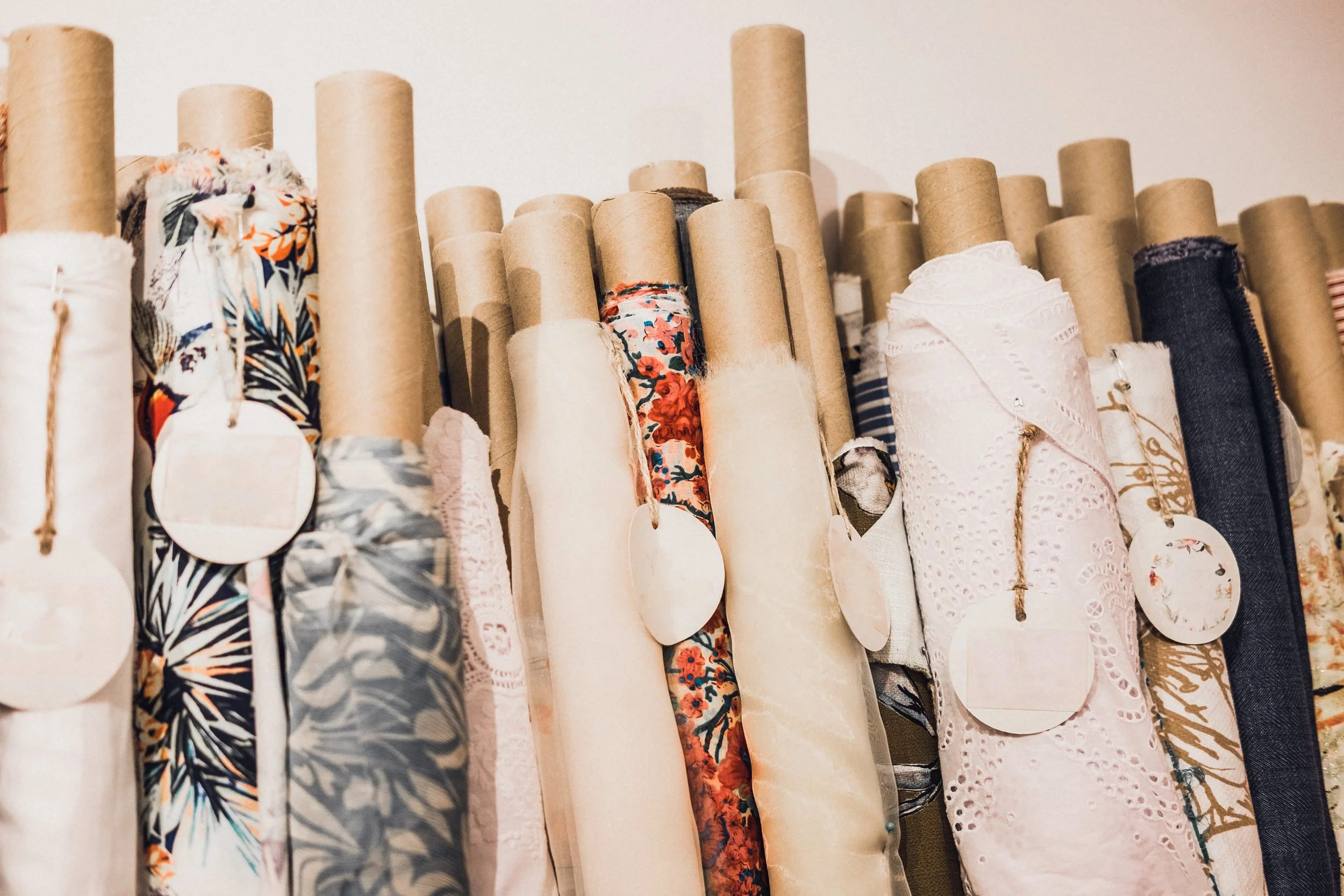Fabric or Pattern: What to Prioritize First?
When you are getting started, there are a lot of moving parts to the process. I would like to say that product development is linear, however there are many overlapping parts. You want it all to happen at once and it’s hard to know what to focus on.
You need both the fabric and the pattern to make a garment, but where do you start?
I can’t tell you exactly the right moves for you, but I can give you an idea of what helps me to complete my part of the job, as a patternmaker, for you.
Patterns are made for specific fabrications
This is the biggest factor that you need to take into consideration. If you haven’t figured out your fabrics I am going to start by asking if you are making a knit or a woven garment. These are the two most differentiating classifications of fabrics. One stretches, the other does not.
Wovens are woven on a loom. There is a warp and a weft thread that intersect to form the weave. A knit is a single yarn that is knitted to interlock, thus providing stretch. The patternmaking approach is going to be completely different for each of these two categories of fabric.
There are grey areas of fabric such as woven fabrics that have mechanical stretch which is basically spandex (stretch) built into the weave of the fabric. These have a lot of variance. If you are making a pair of pants out of this, it’s going to be really important to have the same fabric on hand for sampling as you are planning to produce in, but more on that shortly.
Within each category of fabric are the subcategories, such as neoprene and tissue jersey for knits and twill denim or silk charmeuse for woven fabrications. Obviously there are difference between each of these, namely the thickness and how they will drape.
How a fabric drapes is hard to define, but it is vitally important for your styling and your patternmaker will take this into consideration. A big flowing gown will look totally different in denim vs silk charmeuse. This may seem extreme, but within even the category of silk charmeuse you will find that there is a lot of variance and how one type behaves does not mean that all will appear the same way.
“So you are saying that I need to know my exact fabrication before getting a pattern made?”
Not necessarily. I just want you to have a pretty good idea and have something ready for sampling that will be a pretty close representation to what your bulk fabric will be. Don’t expect a garment made from substitute fabric to fit the same way as your bulk fabrication. Especially in the case of knits. If you change the weight or finish ever so slightly, the fit differences can be extreme.
Whenever possible try to get sample yardage from your fabric supplier in the actual goods you are looking to use. Sometimes they will have a strange color on hand which is totally fine for a sample.
If you have substituted fabric for your project during the sampling process and absolute must is to have a garment made in the correct fabrication. Even if the fit has been perfect and you already paid for a couple of samples. Trust me, this is something that you will want to do to ensure consistency. If you have to spend and additional $150 on a sample do it. It’s better to double check all aspects than leaving it to chance.

